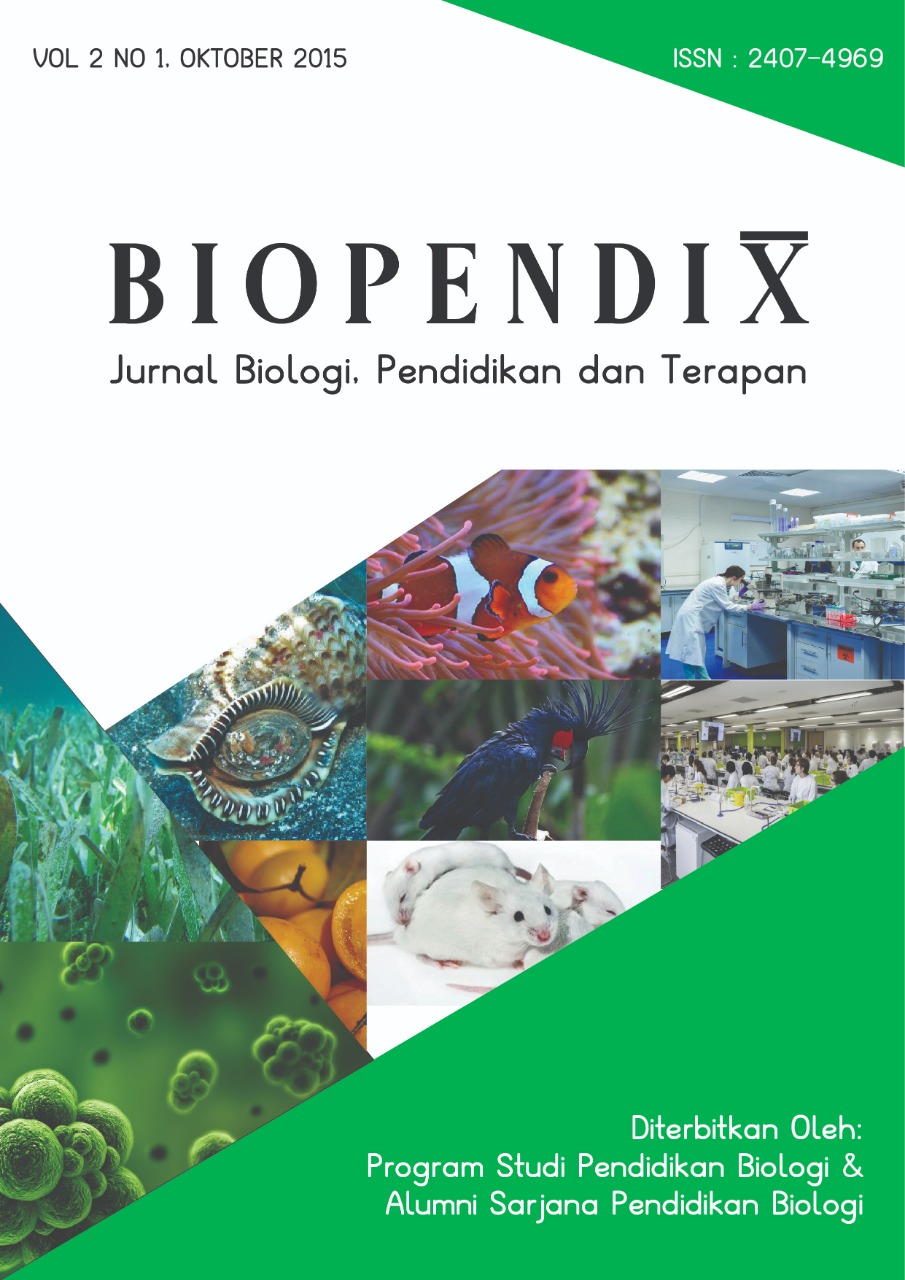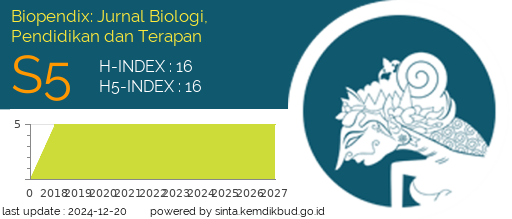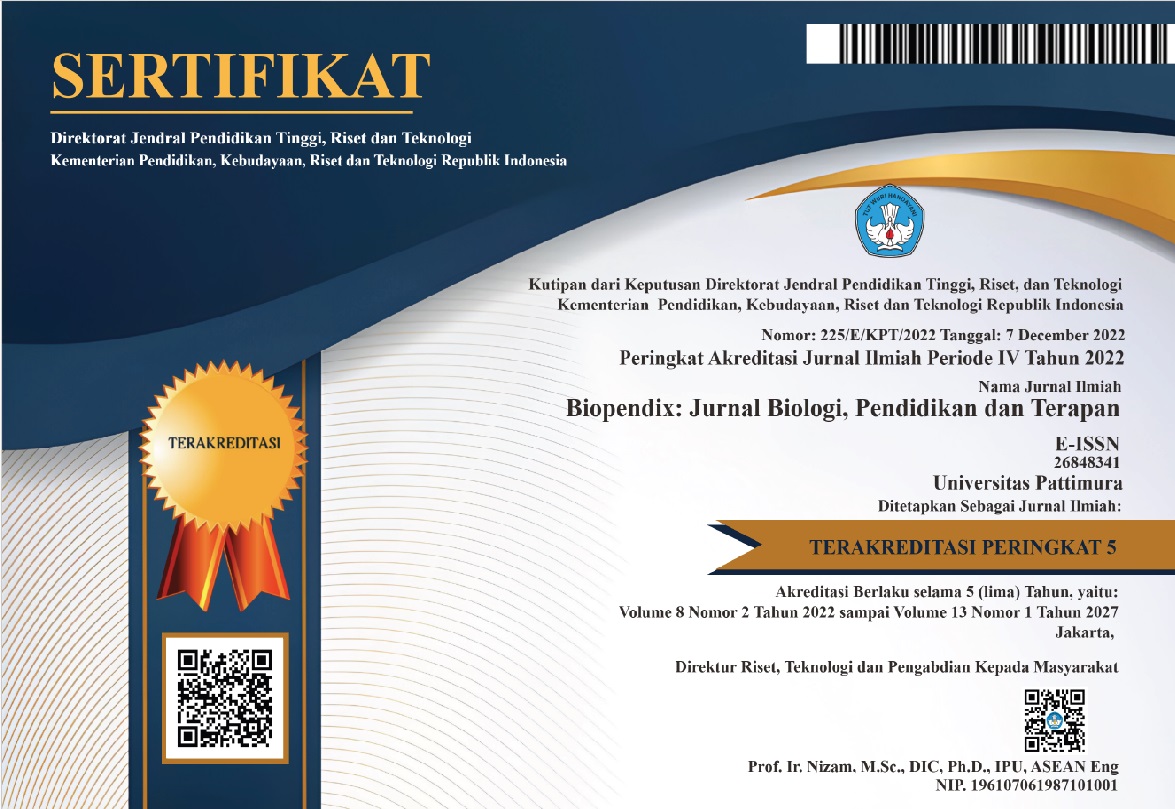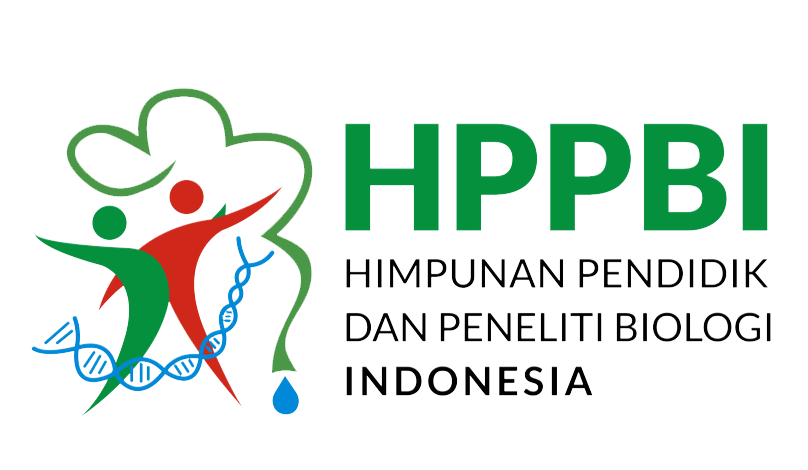PENGARUH BERBAGAI JENIS DAN DOSIS PUPUK ORGANIK TERHADAP PERTUMBUHAN DAN PRODUKSI TANAMAN HOTONG (Setaria italica [L.] Beauv)
Abstract
Background: One type of organic fertilizer is manure that contains nutrients that can support the growth of microorganisms in soil fertility and soil. On the island of Buru, the people there know and cultivate community hotong normally used as a traditional food.
Methods: This study was conducted in the District Three Village house Baguala, which lasted for four months ie from March to June 2015. The study was conducted in the form of two factor experiment in a randomized complete block design (RAK). The first factor (I) is a type of organic fertilizer (F), which consists of 4 levels of treatment and the second factor (II) is a dose of organic fertilizer (M) comprising 5 stage treatment. Observations were made on indicators of growth in terms of height and number of leaves and production indicators include the number of tillers (JA), the number of panicle (JM), panicle length (PM), planting seed weight (BBP), and the dry weight of stover (BKB).
Results: The existence of the effect of the type of organic fertilizer on the growth and poduksi plant hotong seen in the treatment of type of fertilizer week 8 is on F3 and F4 showed high growth of crops, leaf number ever, the number of panicle most, the number of tillers most, panicle length of the longest and most planting seed weight and dry weight of stover. The influence dose of organic fertilizer on the growth and yield of hotong look at treatment week 8, namely the treatment of M2, M3 and M4 showed high growth of crops and the number of leaves, the highest and the treatment number of panicles and tillers most, panicle length of the longest as well as the weight of seed planting and a dry weight of stover. Recommendations effective fertilizer in crop cultivation hotong is to use the type of chicken manure and cow with doses of 900 and 1200 g / polybag.
Conclusion: The interaction between treatment types of fertilizers and fertilizers at the variable growth in terms of height (TT) and number of leaves (JD) as well as for variable production panicle length (PM), the weight of the seed crop (BBP) and the dry weight of stover (BKB) showed their influence the type and dose of fertilizer on each variable hotong growth and crop production, reflected in the growth and crop production hotong diverse in every treatment.
Downloads
References
Goldworthy. P.R. dan N.M. Fisher. 1996. Fisiologi Tanaman Budidaya Tropik Gajah Mada. University Press.
Hildayanti, 2012. Studi Pembuatan Flakes Juwawut (Setaria italica). Universitas Hasanudin. Makassar.
Lingga, P. Dan Marsono.2000. Petunjuk penggunaan Pupuk. Penebar Swadaya. Jakarta
Maruapey, A. 2011. Pengaruh Jarak Tanam Dan Jenis Pupuk Kandang Terhadap Pertumbuhan Dan Gulma Dan Hasil Jagung Manis. Seminar serealia. Hal 123-129
Mayadewi, A. 2007. Pengaruh Jenis Pupuk Dan jarak Tanam Terhadap Pertumbuhan Gilma Hasil Jagung Manis. Jurnal Agri, vol 26 (4): 153-159 ISSN: 0215 8620.
Novizan. 2005. Petunjuk pemupukan yang efektif. Agro Media Pustaka, Jakarta.
Nyoman, S. 2010. Pengaruh Dosis Pupuk Terhadap Pertumbuhan dan Hasil Beberapa Varietas Kacang Tanah (Arachis hypogea L.). Universitas Udayana. Jakarta
Rumbawer F, 2003. Pokem Terigu Unggul Indonesia Masa Depan. Papuan Joernal Social and cultural Antropology.Laboratorium Antropologi Fakultas Ilmu sosial Politik. Universitas Cendrawasih. Jayapura.
Sarief E.S, 1995. Kesuburan dan Pemupukan Tanah Pertanian. Pustaka Buana. Bandung.
Sumiarjo, K. 2011. Penggunaan Abu Sekam Dan Pupuk ZA Terhadap Pertumbuhan Dan Hasil Tanaman Tomat (Lycopersicum esculentum Mill). Embryo Vol. 8 No.1: 9-17.
Tangmomere., A. 2013. Respon pertumbuhan Dan Hasil tanaman Pokem (Pennisetum., SP) Pada Berbagai tingkat jenis dan Dosis Pupuk Organik.
Tim Pengembangan Hotong Buru. 2006. Pengembangan Hotong Buru Untuk Menunjang Ketahanan Pangan Nasional. Fakultas Teknologi Pertanian. IPB. Bogor.
Zamriyetti. 2005.Pengaruh Pupuk Kandang AyamTerhadap Pertuman Produksi Beberapa Varietas Jagung Semi (Baby corn). Jurnal Penelitian Bidang Ilmu Pertanian.
Authors who publish with this Journal agree to the following terms:
- Author retain copyright and grant the journal right of first publication with the work simultaneously licensed under a creative commons attribution license that allow others to share the work within an acknowledgement of the work’s authorship and initial publication of this journal.
- Authors are able to enter into separate, additional contractual arrangement for the non-exclusive distribution of the journal’s published version of the work (e.g. acknowledgement of its initial publication in this journal).
- Authors are permitted and encouraged to post their work online (e.g. in institutional repositories or on their websites) prior to and during the submission process, as it can lead to productive exchanges, as well as earlier and greater citation of published works





 2
2






